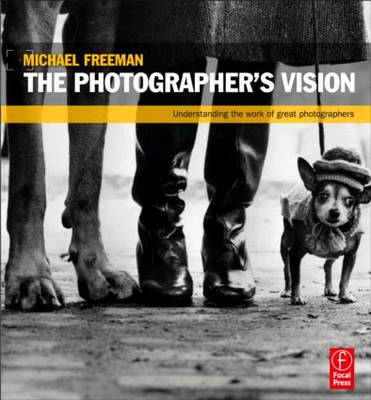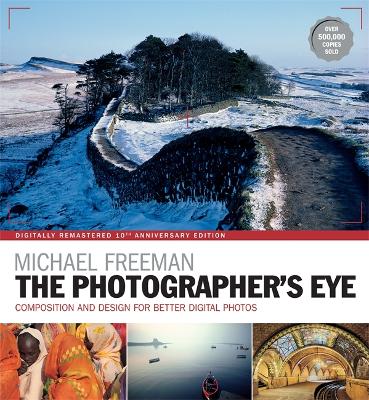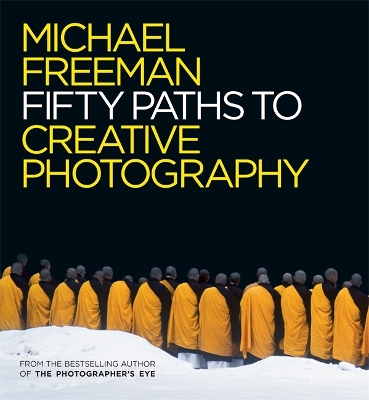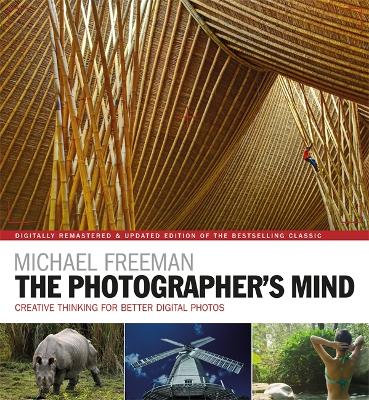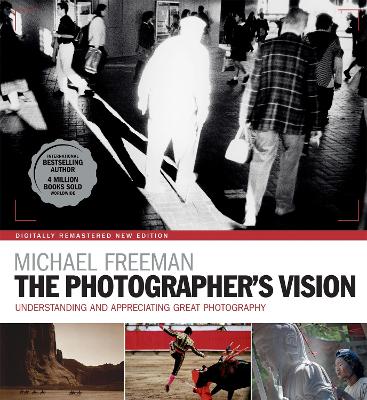The Photographer's Eye
9 total works
The source of any photograph is not the camera, or even the scene viewed through the viewfinder - it is in the mind of the photographer. In The Photographer's Mind, photographer and author Michael Freeman unravels the mystery behind the creation of a photograph.
More than any other art form, the nature of photography demands that the viewer constantly be intrigued and surprised by new imagery and different interpretations. The aim of this book is to answer what makes a photograph great, and explore the ways that top photographers achieve this goal time and time again. The Photographer's Mind will provide you with invaluable knowledge on avoiding cliche, the cyclical nature of fashion, style and mannerism, light and even how to handle the unexpected.
In The Photographer's Eye, Michael Freeman showed what a photographer needs to do in the instant before the shutter is released. In the sequel, The Photographer's Mind, he explained the way that professional photographers think a picture through before taking it. Both of these international best-sellers featured Michael's own photography: stunning landscapes, revealing portraits, and fascinating street photography. Now, in The Photographer's Vision, he examines the work of photography's greats, explaining how to look at a photo - and how to learn from looking at it.
Taking a new look at composition, the theme of his best-selling classic The Photographer's Eye, Michael Freeman now explores the visual mechanics of photography in its own native terms. Lushly illustrated with straight-to-the-point diagrams and graphic deconstructions, this book speaks in that intuitive, visual, and instantaneous language in which photographers think and work.
Each section is organised into discrete units that articulate a working method for communicating particular ideas and capturing certain subjects. Dive into beautiful images and explore how each compositional element is placed and arranged in relationship to each other. Examine the outtakes from each shoot to understand why one particular image succeeded, compared to those shot before and after. Track the viewer's eye as it moves throughout the photo to see the optical dynamics held within each frame. And most of all, internalise this graphic language so you can instantly recognise amazing and powerful shots as they appear in your own viewfinder.
Design is the single most important factor in creating a successful photograph. The ability to see the potential for a strong picture and then organize the graphic elements into an effective, compelling composition has always been one of the key skills in making photographs.
Of course, digital photography has brought a new, exciting aspect to design first because the instant feedback from a digital camera allows immediate appraisal and improvement; and second because image-editing tools make it possible to alter and enhance the design after the shutter has been pressed. This has had a profound effect on the way digital photographers take pictures.
The Photographers Eye shows how anyone can develop an eye for seeing great digital photos. The book explores all the traditional approaches to composition and design, but crucially, it also addresses the new digital technique of shooting in the knowledge that a picture will later be edited, manipulated, or montaged to result in a final image that may be very different from the one seen in the viewfinder.
The most important practical photography book in a decade.
"A really inspiring book" - Amateur Photographer magazine
The eagerly awaited follow up to global bestseller The Photographer's Eye will show you the paths the greatest photographers took to excellence so you too can take stand-out thrilling photographs.
In Freeman's own words: "There's a long line of opinion, from Plato through Kant, that holds creativity to be unteachable, and to be the province of genius. You have it or you don't. End of story. I don't agree"
By looking at the work of other great photographers, as well as Freeman's own work, the book provides the reader with 50 "paths" they can explore to think about taking photos, looking at subjects from cliché to zen, so you will be able to hit the right point in surprise, originality, insight and execution every time.
The secret behind a good photograph is not your camera. It's not even the scene viewed through the viewfinder. It's the mind of the photographer which turns an average photograph into an exceptional one.
In The Photographer's Mind, professional photographer and author Michael Freeman unravels the mystery behind the creation of a photograph and reveals how to capture photos that really make you feel something.
The aim of this book is to answer what makes a photograph great, and explore the ways that top photographers achieve this goal time and time again.
The Photographer's Mind will provide you with invaluable knowledge on:
· Avoiding cliché
· The recurring nature of trends
· Style and composition
· Capturing light
· How to handle the unexpected
This second edition of acclaimed bestseller Perfect Exposure looks at the way professionals address the fundamentals of photography, laying out the decision-making process with the absolute clarity Michael Freeman is famed for. While addressing a subject as old as photography, exposure, this book is fully updated to cover the influence of all the latest technology.
Chapter one introduces not just the key camera settings, but also the photographer's ideal decision flow, a process you can easily use in your own work. Chapter two examines all the camera technology designed to assist you in capturing the perfect photo, giving honest thoughts on its advantages and disadvantages. Chapter three is a complete theory and practice of exposure broken down into every shooting scenario you'll ever encounter, from evenly lit scenes to those with wild contrast. Chapter four deals with developing style through exposure, including ideas like high key photography, silhouette and more, as well as a look at the zone system, pioneered by photographers like Ansel Adams, in a digital context. Finally Chapter 5 looks at the powerful post-processing techniques.
In The Photographer's Vision, international bestseller Michael Freeman examines the work of photography's greats, explaining how to view a photo and how to learn from looking at it.
Photographers featured include some of the most distinguished names in photography's history: Nick Knight, Frederick Henry Evans, Frans Lanting, Tim Page, Wolfgang Tillmans, Nan Goldin, Walker Evans, Cindy Sherman, Elliott Erwitt, Trent Parke, Jeff Wall, Paul Strand, Romano Cagnoni and many more, making this book visually stunning as well as intellectually rigorous.

